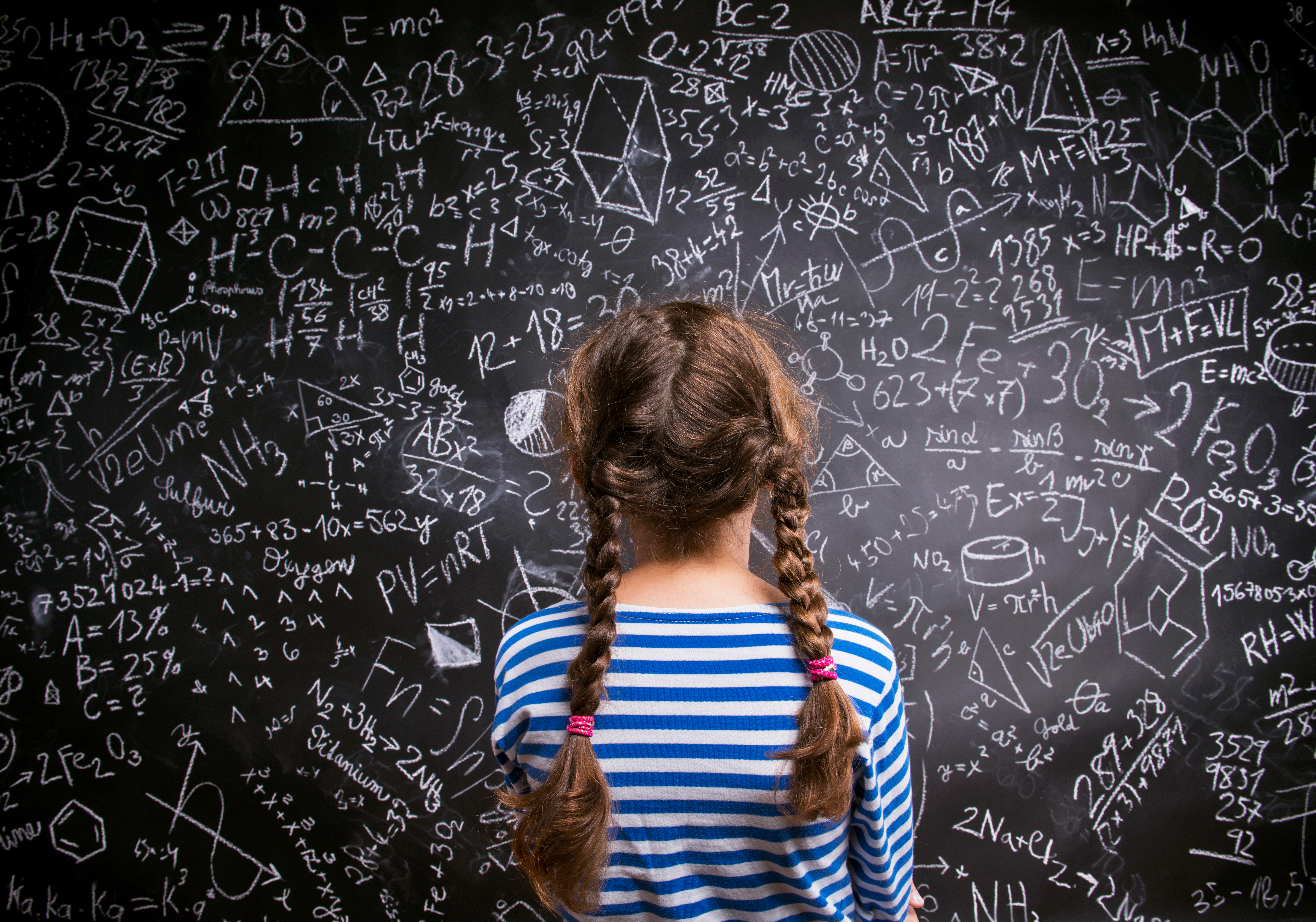What would happen if we used robotics to heat and cool only the occupied areas of a building? Super smart way to reduce energy waste! What if a revolutionary train system could run solely on renewable energy? Um, transportation emissions would go way down! And what if we could reduce our need for antibiotics, predict wildfires before they occur and locate underground water leaks before too much water was lost? We’d be heroes for solving some of today’s top health and environmental crises! Now, what if you thought of these ideas in middle school and a 3M mentor wanted to help you make it possible? At our age? Stop. Tell us everything.
It’s true.
These ideas were all developed by middle school students, and they represent only half of the astounding innovations selected by 3M to be finalists in the 2019 3M Young Scientist Challenge. Created with partners Discovery Education, the #YoungScientist Challenge encourages kids in grades 5 to 8 to submit a 2-minute video describing “a unique solution to an everyday problem.” All 10 finalists’ ideas blew our mind, and Être was thrilled to interview five of them, learning more about what drew them to the challenge, their projects and how 3M mentorship is changing their lives.
Meet Jaya Choudhary, who engineered an Airflow Control Robot designed to help reduce energy consumption in the home, Caroline Crouchley, who developed a sustainable method of train transportation eliminating the need for diesel engines or electric motors, Kara Fan, who formulated a nano particle liquid bandage to replace the use of antibiotics, Reshma Kosaraju, who is using machine learning and neural networks to predict forest fires, and Camellia Sharma, who developed a detection system to identify underground water leakage. Everybody was 13 at the start of the challenge, except Camellia. She was 12. You understand why we had to know more.
Ê: Hi and congratulations on being named a 3M Young Scientist finalist! We’ll jump right in – how did you first hear about the Young Scientist Challenge, and who were your earliest inspirations?
JC: I first heard about the 3M Young Scientist Challenge last year. My dad, my older sister, and I saw the 2017 winner Gitanjali Rao’s video about detecting lead in the water. Her innovation was very inspiring, and we researched the competition. In 2018, my older sister, Pragya Choudhary, submitted her entry and was awarded a State Merit Winner. This motivated me to participate, and I am having so much fun! My earliest inspirations were (and still are) my dad, my mom and my uncle. Ever since I was a young kid, I’ve been interested in a career in science because of my uncle, who is a doctor, and my dad, who is a mechanical engineer. My mom has always been a hard-working person and I strive to have a similar attitude.
CC: I first heard about the 3M Young Scientists Challenge from my older brother Austin, a 3M Young Scientist Finalist in 2017, who invented a solar tracker to pump water from wells in developing nations. I also have participated in nine science fairs over the last two years, so I knew about the competition from my science teachers at school. My earliest inspiration in science was from my grandfather, who told me about the time he participated in a science fair in high school – the judges had to call the fire department and the explosive units because of my grandfather’s prototype! Another big inspiration for me has been the Girl Scouts. I’ve been a member of Girl Scouts since first grade and it has taught me values, leadership, respect and empowers me to reach my inner potential. Allie Weber was also an inspiration to me. I met her at the Maker Faire in New York in 2018 and I enjoyed watching her blogs and following her adventures in science.
KF: I had the opportunity to compete in the California state science fair, where I learned about the 3M Young Scientist Challenge from one of the contestants. The 3M Young Scientist Challenge was a great way to share my innovation and compete with others while receiving guidance at the same time. A couple of years ago, I went to a summer chemistry camp where we learned how to make mini fireworks, multi-colored fire and other fascinating things. After taking that class, I started to get more interested in science, so I decided to participate in my local science fair.
RK: I first heard about the 3M Young Scientist Challenge through friends. After researching the challenge, I knew that this was an opportunity of a lifetime and I couldn’t let it slip away. My earliest inspirations were my cousins. They continue to inspire me to use science and technology to solve problems because they are very innovative and are extremely intelligent in the way that they approach and solve problems. They always make me strive to be just like them.
CS: My brother, Cameron, was a 3M Young Scientist Challenge Finalist last year. He and my 4th and 5th grade teachers were my earliest inspirations. Cameron showed me that one should not be afraid of reaching high, such as aspiring to be a 3M Young Scientist Challenge Finalist. My teachers introduced me to the wonderful world of STEM. They also helped me with the projects for the annual non-competitive science fairs held at our school.
Ê: So cool – we love how many siblings and friends were involved! And Gitanjali Rao and Allie Weber completely inspire us too! Tell us, how will your idea solve a problem and why is that problem important to you?

JC: My project is an attempt to reduce the effects of two imminent threats to humanity: the global energy crisis and climate change. My idea is to create a robotic airflow control system that will only heat and cool occupied areas in a building. This will reduce the energy wastage by not sending hot or cold air to unoccupied areas. By cutting the energy waste, we will reduce the demand for energy, conserving fossil fuels. If we burn fewer fossil fuels, we will release fewer greenhouse gases, thus reducing climate change. These problems are both extremely important to me because if they aren’t solved, they will have disastrous effects to our planet.

CC: Currently, transportation is responsible for about a third of our country’s climate-changing emissions. Reducing transportation emissions is one of the most important steps in fighting global warming. I designed a new train technology that could be developed into the safest, lightest, and most efficient train system in the world. It operates completely on renewable energy and doesn’t cause pollution. Current trains use polluting diesel engines and electric motors that rely on fossil fuels. Drastically reducing transportation emissions is important to me because if the earth warms just half a degree more, tens of millions more people will experience life-threatening heat waves, water shortages, and coastal flooding. With so much heat-trapping carbon in the atmosphere, there will be, in effect, no turning back.
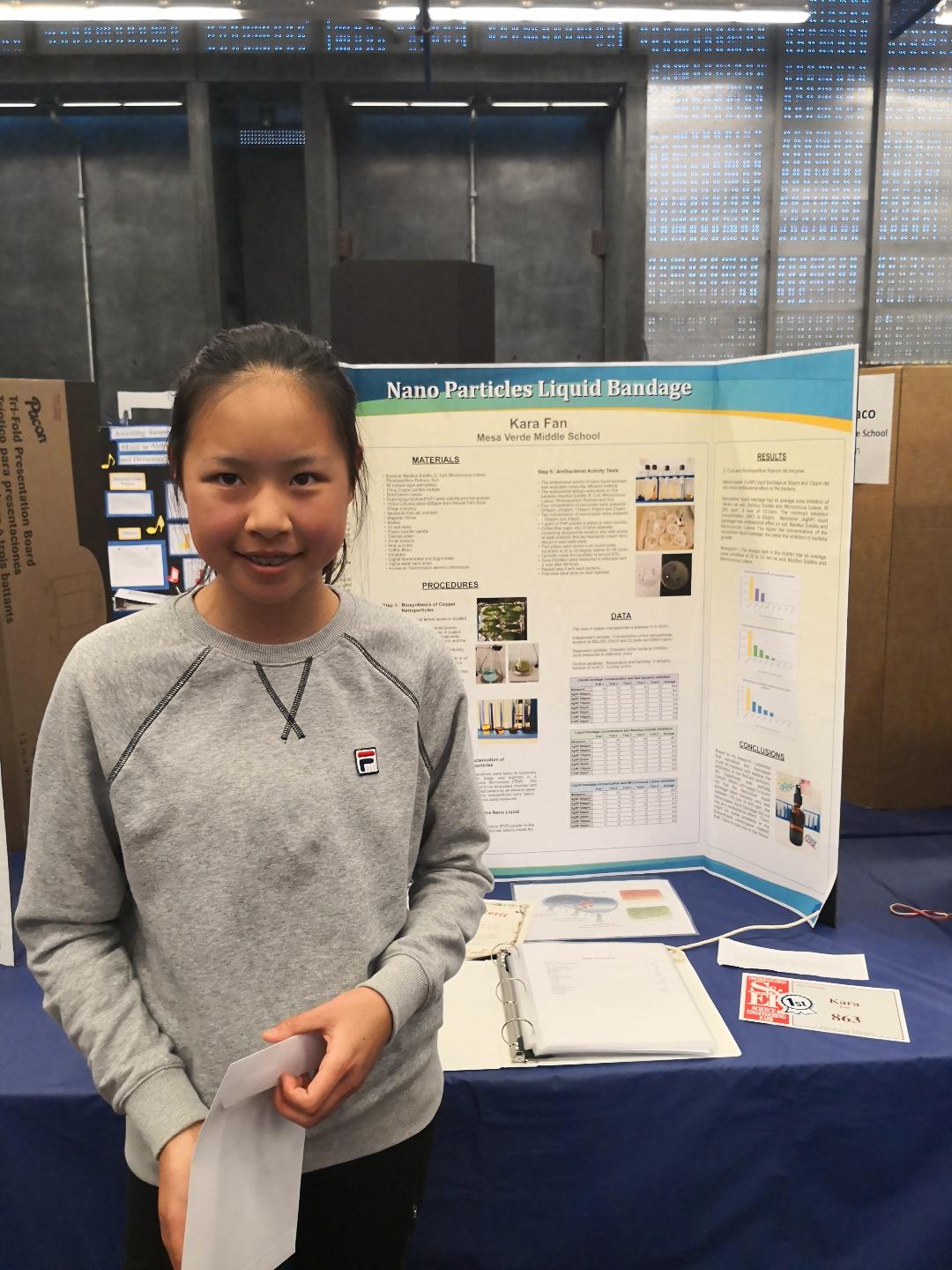
KF: My research is to see if nano copper and nano silver can be used as antibacterial agent in first aid ointment to reduce the need for antibiotics. The overuse and misuse of antibiotics in humans and farm animals have led to the rapid increase of antibiotic-resistance bacteria, also known as Superbugs. This makes antibiotics useless to humans. Today, antibiotic resistance bacteria (or superbugs) kill about 700,000 people each year. A British government study estimated that superbugs could kill 10 million people every year by 2050 – that’s more than the number of people who will die by cancer by that year.
RK: Uncontrolled forest fires are a major problem and cause many deaths each year. They also inflict much damage on the environment and are estimated to cause economic losses totaling up to $350B annually in the US alone. We moved to California from Chicago in the fall of 2018. Soon after we moved, the Camp Fire occurred in northern California claiming 86 lives and caused damages estimated to be about $17B. A lot of people were evacuated, and the smoke was so intense that we had to wear masks even though we were over 200 miles away.
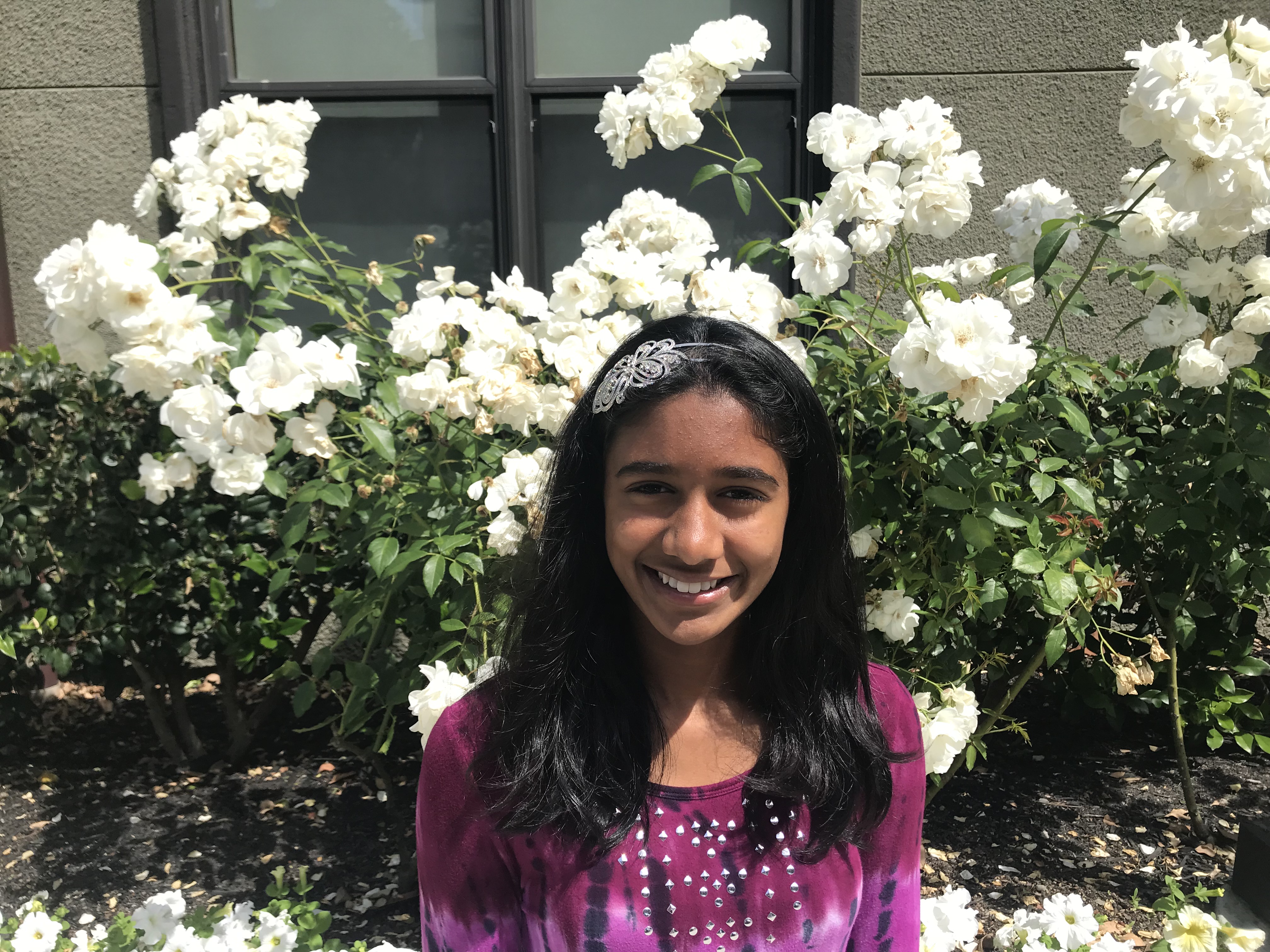
This got me thinking about what could be done to mitigate the occurrences and impact of fires. Currently, there are several methods of fire detection, but these methods have limitations that are making them ineffective, including timeliness of response, high cost of operation, and frequent false alarms. My project attempts to address these limitations by using meteorological data combined with established fire index data to develop a Neural Network model that can be used to predict wildfires before they occur.

CS: I am passionate about our environment. As I was investigating the problem of having enough clean water, I found that not much attention is being paid to our aging water distribution systems. The structural and hydraulic integrity of the pipelines degrades over time. Annually, 50 billion cubic meters of water is lost worldwide through leaky pipes. Eight billion of that is in the United States. The problem is especially severe in many developing countries due to insufficient rainfall.
Ê: These. Are. Amazing! Did you make any changes to your initial idea(s) during the submission process and, if so, what changes did you make and why?
JC: There are several planned enhancements to my original idea. Currently, I’m working on improving the occupancy detection. The initial prototype used motion sensors to detect occupancy, which is good during the day when everyone is up and moving. However, during the night, there is little to no motion as everyone is sleeping. I’m planning to use a thermal imaging camera to improve occupancy detection when there is no motion.
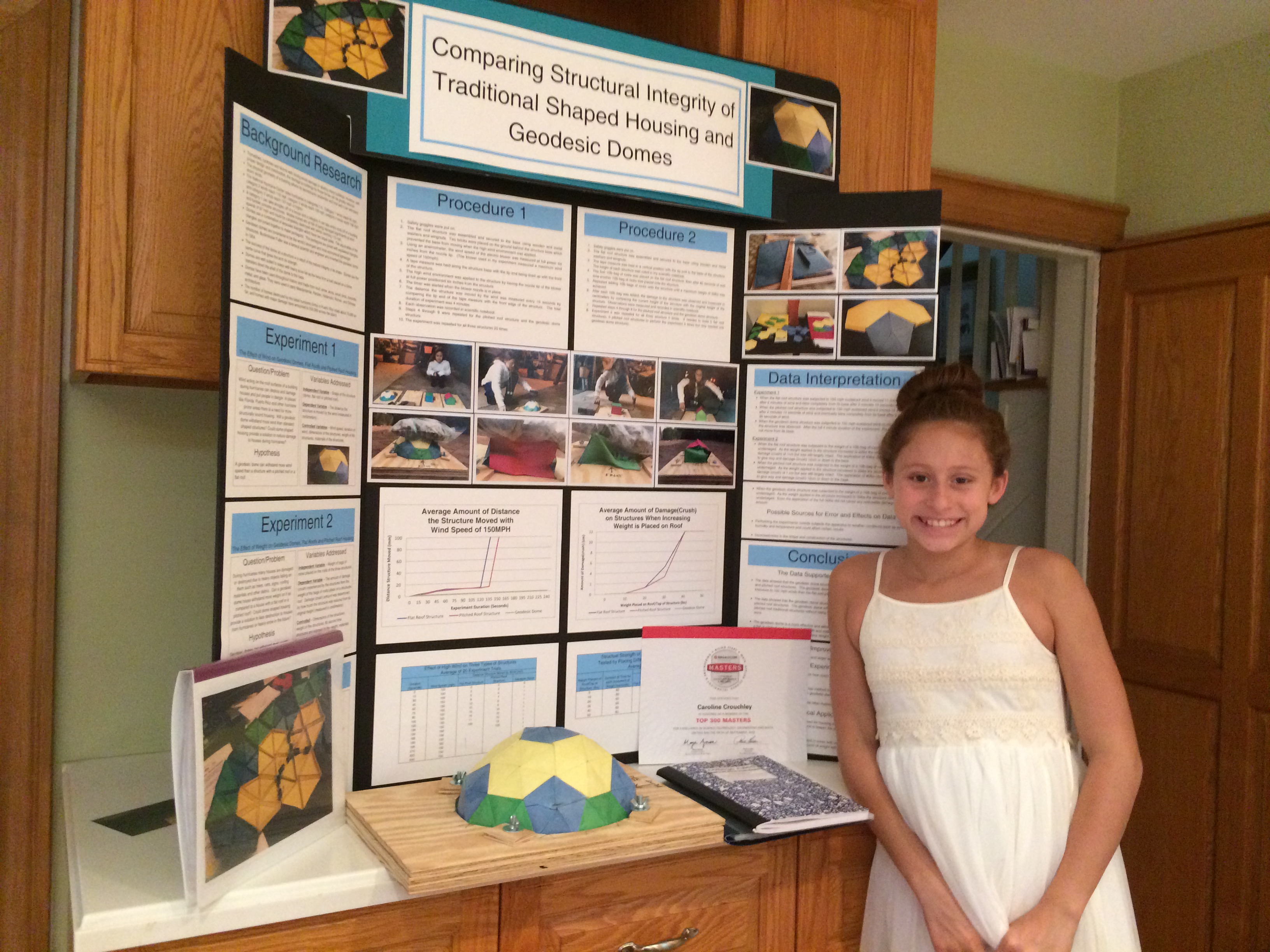
CC: Most every aspect of my design did not work at first. At one point one of my trains went flying across the room and shattered into pieces! The biggest lesson I learned was to keep challenging myself to come up with different solutions to problems. Finding the optimal train weight was challenging. Trains too heavy disconnected from the Magnetic Connector Arm when air pressure was applied. To solve, I took apart one and rebuilt it, stripping it of most of its parts. My original idea was a magnetic driven vacuum train, but it was difficult to regulate the vacuum air flow. To solve, I modified a 110V air compressor to work with a 12V air compressor and storage tank which provided a steadier air flow. My working prototype demonstrates proof of concept of building this technology in the real world.
KF: Instead of using nano copper, I focused on using nano silver to kill bacteria. This is because the biosynthesis of the nano copper didn’t work in my experiments.
RK: Initially, I planned on only building a Neural Network model to predict the chances of a forest fire based on meteorological data. During the submission process, as I thought about it some more, I decided to expand the potential scope of the project and try to make it operational through the help of the 3M scientists and the Summer Mentorship. I researched my options and then decided that my best course of action would be if I connected my model to Automatic Weather Stations that continually collect the meteorological data that is necessary for my model.
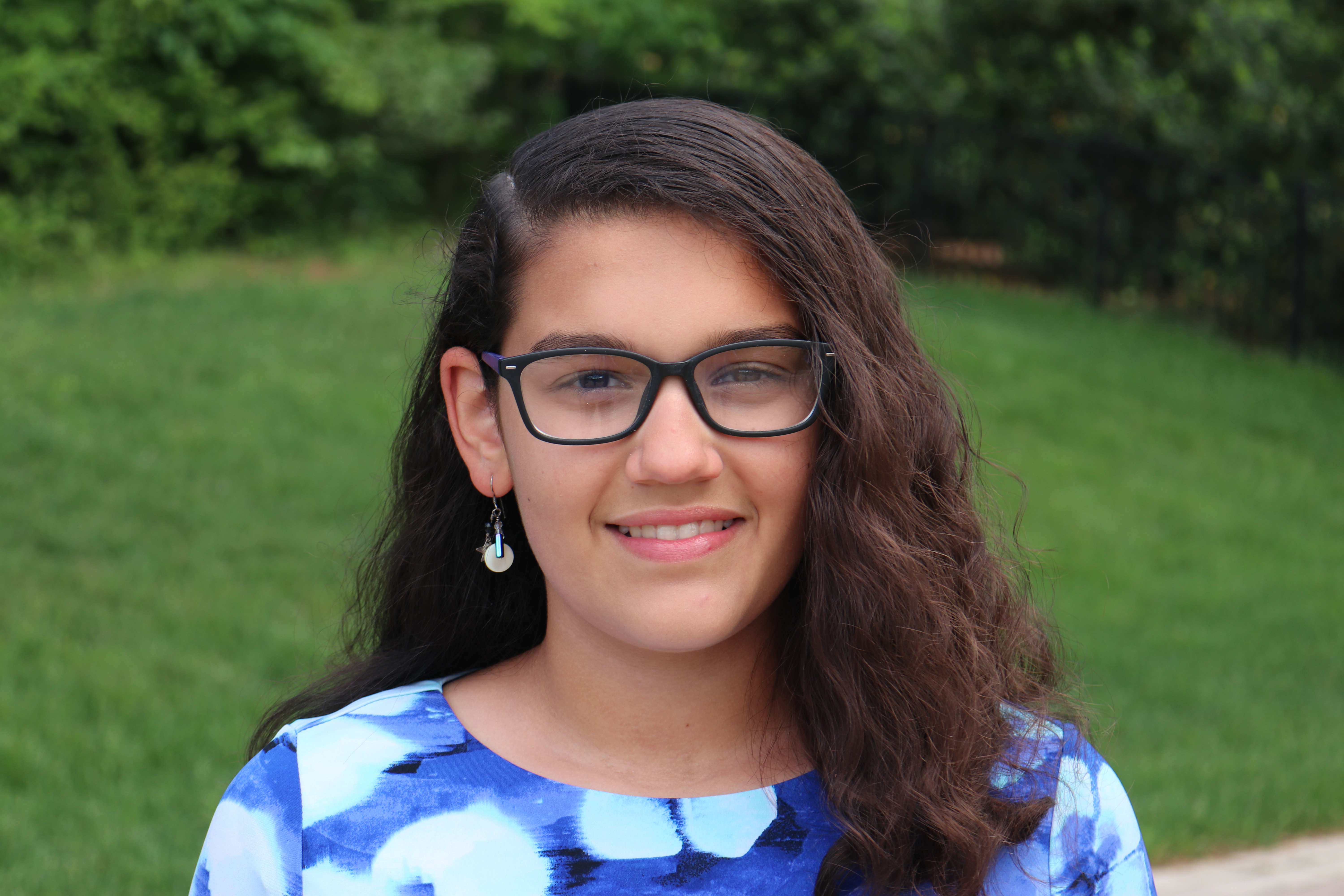
CS: I did not need to make any changes to the initial ideas during the submission process. However, it was done during the early phases of the project. I investigated multiple technologies that are being used in other industries and found the two that worked the best for my application. The chosen technologies use two different principles of physics. One is measuring the time taken by an electrical pulse to bounce back from an open end, while the other uses the change in the impedance of soil when water has accumulated underground.
Ê: Smart problem-solving! What does having a 3M mentor mean to you – not just for this project, but for your future?
JC: Having a 3M mentor like Dr. Döne Demirgöz is an amazing opportunity for me to be able not only to improve my innovation, but also to have a glance at what a career in science may look like.
CC: Meeting my mentor Kandyce Bohannon means the world to me. I have already met her via Skype and it is so important to me to have a female role model in STEM. She is open, honest and very down to earth. She talks to me as if she was my big sister, which is the best because I don’t have a sister. I am so grateful for this experience! It is really opening my eyes to the possibilities that could exist for me in the world of science.
KF: My mentor, Sara Hemmer, has given me a lot of advice for my project. She set up meetings for me with other 3M scientists and they showed me some 3M products that can help with my research project. I have learned so much from them so far.
RK: Having a 3M mentor means that I am one of the few students with the opportunity of a lifetime! I have someone who can help guide me through the process of solving problems in a structured manner. I get to build a relationship with my 3M mentor, Sam Reiss – not just for the duration of this project but for the future as well. Sam has already been extremely helpful with my project and I hope to continue to leverage him as a sounding board for thoughts, ideas and advice in the future! I hope to build on this relationship with my mentor well into the future as I seek to become a successful scientist as well.
CS: I am highly thankful to the 3M mentors and 3M Young Scientist Challenge for spending their resources to make this event happen. It means a lot to me to have all this, even before I am a teenager. My mentor, Dr. Ann Fornof, is giving me her time and expertise to improve my project and she is doing so selflessly. The 3M Young Scientist Challenge is providing me an international forum to showcase my project. I expect to stay in touch with Ann after the competition. We still communicate with Dr. Mahfuza Ali, [my brother] Cameron’s mentor from last year. I am hoping that someday I will have an opportunity to propagate Ann and Mahfuza’s kind deed and be a mentor myself.
Ê: OK, we now want all of you to mentor us! Not even kidding. We’re so grateful that you took the time to answer our questions…and we’re beyond inspired. Last one: What advice would you give to middle school kids today about using STEM to solve today’s problems and meet tomorrow’s challenges?
JC: The advice I would give to middle school kids is to constantly think about how learning in the science class can be applied to solve real world problems we face today. They should try to understand how stuff around them works and the science behind them. This will make them find science more interesting.
CC: Don’t be afraid. Ask for help. Don’t limit yourself to just one STEM topic. Leave the world a better place. Don’t fear perfection.
KF: Innovation leads to new products and companies like 3M, Space-X and Tesla. This innovation and science literacy depends on a solid knowledge base in the STEM areas. It is clear that most jobs of the future will require a basic understanding of math and science. By exposing students to STEM in middle school and exploring STEM-related concepts, more students will develop a passion for it and hopefully pursue a job in a STEM field.
RK: Don’t be afraid to dream big. No one is too young to change the world. Be aware of what is happening and make observations of problems that need solutions. Then do what you can to solve these problems and you may end up changing the world through what you do.
CS: Pick a project that you are passionate about and do not give up when you hit a roadblock. My 3M Young Scientist Challenge project stretched my knowledge of STEM. Being passionate about environment helped me persevere rather than quit until I created something that worked.
Middle schoolers everywhere, listen to these wise words. These girls love science fairs, just like you. They wonder about the world around them and think up clever solutions to pressing problems…just like you. And they have the chance to revolutionize the future with their innovations. Just. Like. You. You know that idea that keeps popping up – that process or product you’ve been doodling in your notebook? It has potential. And 3M wants to make it real. Watch for the announcement of this year’s winner here, and then start thinking about your own submission for next year! Check out the important dates and guidelines (psst, and helpful tips to create your video), and show this part to your parents.
Get excited. Get inspired. We can’t wait to interview you next!
* * * * *
Être is a mentorship platform for motivated middle school girls, and is grateful to 3M and Discovery Education for launching tomorrow’s innovators today through the #YoungScientist Challenge – and for understanding that mentors matter as early as middle school.


